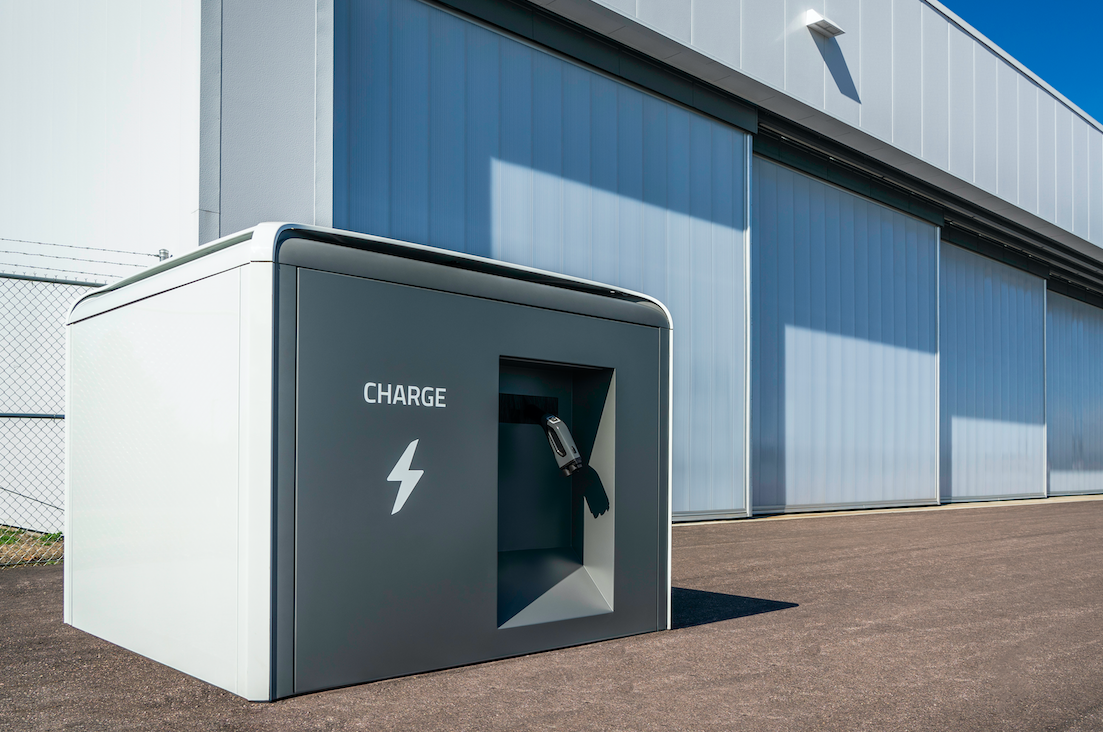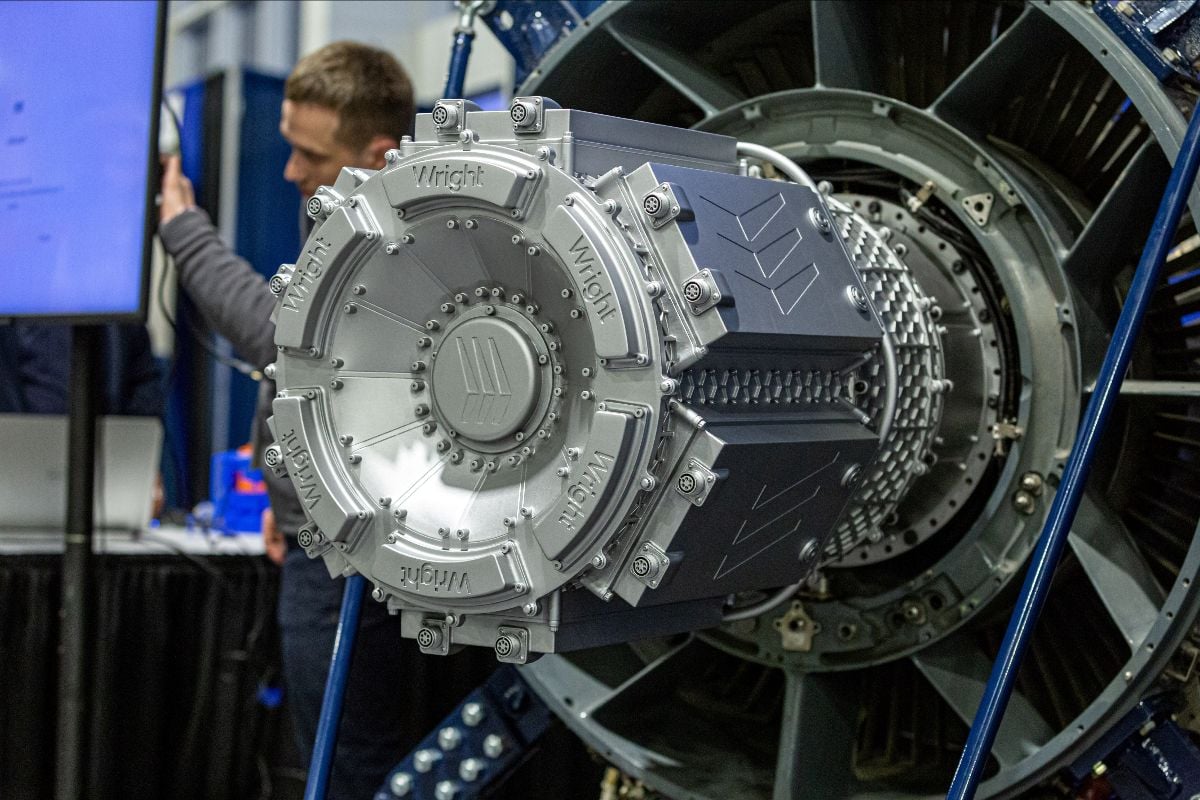U.S.-European startup Cosmic Aerospace has raised $4.5 million in seed financing to progress development of a 24-passenger all-electric regional aircraft.
The funding will be used to build a ground demonstrator of the wing and embedded propulsion that is key to the aircraft’s targeted 1,000 km (623 mi.) range on batteries.
The seed round takes the total raised since Denver-based Cosmic was founded in 2021 to $6 million. The initial funding was used to build and ground test a full-scale prototype of the startup’s electric jet engine. A total of 32 of these 40-50 cm-dia. (16-20 in.) engines will be embedded into the Skylark’s long-span wing, reducing induced drag and structural weight, and enabling longer range.
“We wanted to test the engine as soon as possible and feed the results back into the design of the aircraft,” Cosmic co-founder and CEO Christopher Chahine says. “We conducted full-power static ground tests to the engine’s limits to evaluate thrust performance. The tests were successful.”
The next step is to mature the aerodynamic and structural design of the wing with its integrated propulsion system. Embedding the engines results in a deeper wing box, which enables a longer wing, but causes a stronger coupling between aerodynamics and propulsion.
“We will do aerodynamic detail design. There are a lot of interactions. These are new challenges, but they are all tractable,” Chahine says. With a 36-m (118-ft.) span, the Skylark can use the same airport gates as the Airbus A320/Boeing 737, but the outer non-propulsive sections of the wing fold to reduce span to 24 m and enable the aircraft to use regional aircraft gates, he says.
Cosmic has embarked on what Chahine calls a “systematic de-risk” of the Skylark design. “With the wing there are several key areas we need to de-risk the aerodynamics, structure and propulsion integration.” The seed round provides 24 months of funding runway and the startup plans to meet its key milestones in the next 12-18 months. “We think that is feasible,” he says.
A further funding round will be required to take the next step, which is to build a full-scale demonstrator that is planned to fly in 2026. Cosmic is aiming for certification of the Skylark by the end of the decade under European Union Aviation Safety Agency CS-25(FAA Part 25) rules for large commercial aircraft.
The Skylark’s projected 1,000 km range is based on using existing high energy-density battery power. “We are assuming 320 Wh/kg at the pack level, which means around 400 Wh/kg at the cell level, which is in early production today,” Chahine says. As the engines are embedded in the wing, the batteries are in the fuselage, under the passenger compartment to meet crash requirements.
Chahine was previously an aerospace researcher at the von Karman Institute for Fluid Dynamics and Oxford University. Co-founder and Chief Technology Officer (CTO) Marshall Gusman was with NASA, Kittyhawk, and Boom Supersonic. The team includes Joe Wilding, former Boom co-founder and CTO.
The seed funding round was led by climate technology venture-capital company Pale Blue Dot with participation from technology and climate investors including Singapore’s Aera VC, Germany’s Visionaries Club Tomorrow Fund and Possible Ventures, Belgium’s Syndicate One, Sweden’s Course Corrected, Australia’s Understorey Capital, Japan’s Samurai Incubate, and U.S.-based Fifty Years.












